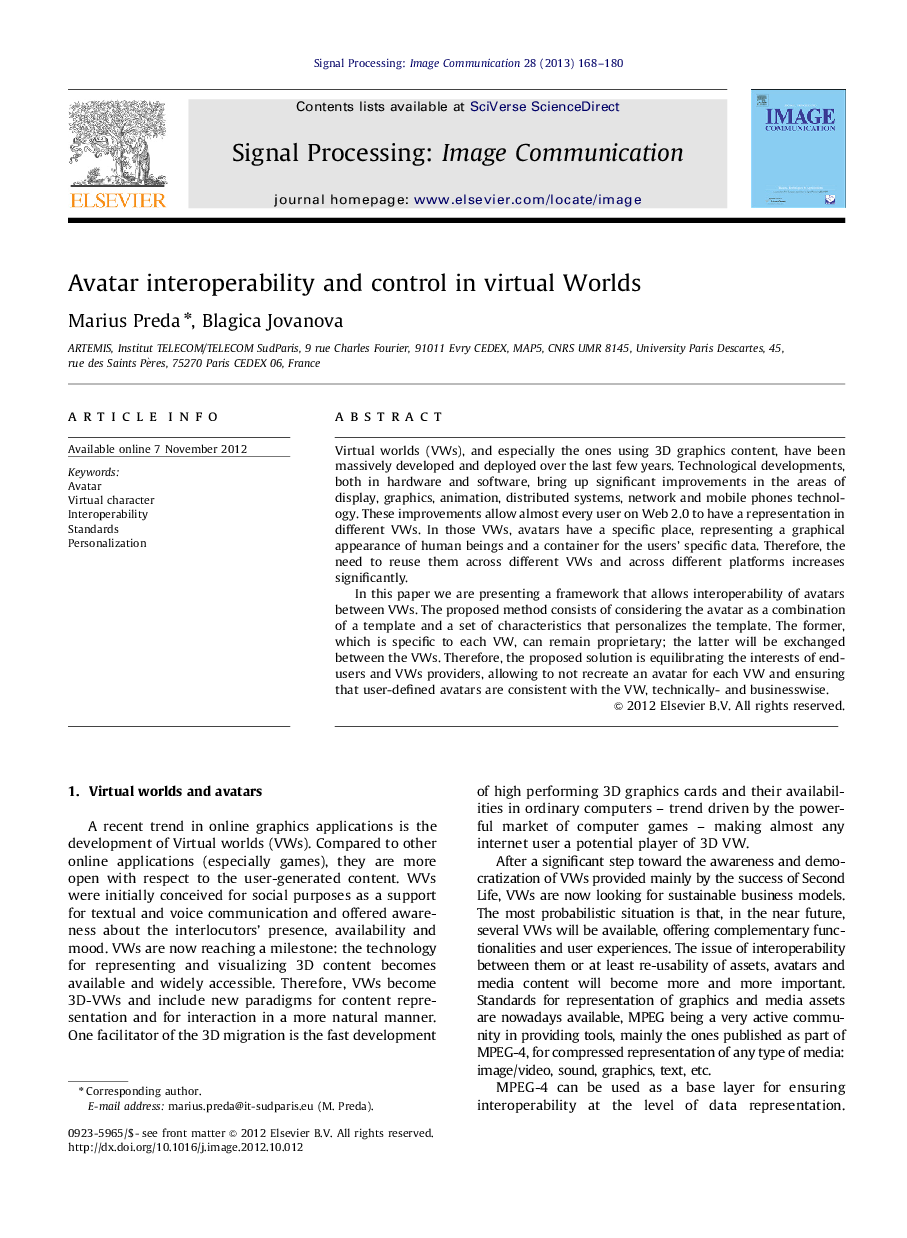| کد مقاله | کد نشریه | سال انتشار | مقاله انگلیسی | نسخه تمام متن |
|---|---|---|---|---|
| 538272 | 871059 | 2013 | 13 صفحه PDF | دانلود رایگان |

Virtual worlds (VWs), and especially the ones using 3D graphics content, have been massively developed and deployed over the last few years. Technological developments, both in hardware and software, bring up significant improvements in the areas of display, graphics, animation, distributed systems, network and mobile phones technology. These improvements allow almost every user on Web 2.0 to have a representation in different VWs. In those VWs, avatars have a specific place, representing a graphical appearance of human beings and a container for the users’ specific data. Therefore, the need to reuse them across different VWs and across different platforms increases significantly.In this paper we are presenting a framework that allows interoperability of avatars between VWs. The proposed method consists of considering the avatar as a combination of a template and a set of characteristics that personalizes the template. The former, which is specific to each VW, can remain proprietary; the latter will be exchanged between the VWs. Therefore, the proposed solution is equilibrating the interests of end-users and VWs providers, allowing to not recreate an avatar for each VW and ensuring that user-defined avatars are consistent with the VW, technically- and businesswise.
► We present a framework allowing interoperability of avatars between virtual worlds.
► The avatar is a combination of a template and a set of characteristics.
► The proposed set of characteristics can be exchanged between the virtual worlds.
► The proposed set of characteristics was promoted in Part 4 of the MPEG-V standard.
Journal: Signal Processing: Image Communication - Volume 28, Issue 2, February 2013, Pages 168–180